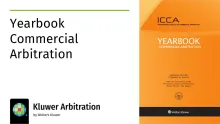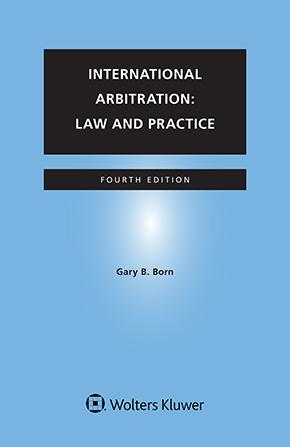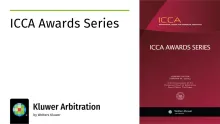Arbitral Immunity in India: in Good Faith and Bad
July 31, 2025
This article discusses the difference in the nature of the immunity granted to arbitrators under the Indian Arbitration and Conciliation Act (“ACA”), as compared to the U.K. Arbitration Act (“AA”). It specifically focuses on the structure of the arbitral immunity clause in the ACA, which reverses the burden of proof to establish good or bad faith. The article also discusses a key consequence of the reversal of the burden of proof — the difficulties that may arise for arbitrators seeking recourse to summary dismissal of proceedings related to their professional duties. It concludes by addressing how this may impact arbitrators’ and parties’ deliberative processes regarding arbitrating under Indian law.
Background
There was no statutory immunity for arbitrators under Indian law prior to 2019. Therefore, an arbitrator could have been held liable for all acts or omissions, unless institutional rules or ad hoc arbitration agreements provided for arbitral immunity.
The ACA was subject to several amendments in 2019. These amendments were largely based on the recommendations of the ‘High Level Committee to Review the Institutionalisation of Arbitration Mechanism in India’ (“HLC”). The HLC's report recommended the insertion of a new provision in the ACA providing immunity to arbitrators, explicitly stating that the recommended provision is “based on section 29 of the AA (UK)”. The recommended provision itself is a verbatim replica of §29(1) of the AA:
An arbitrator is not liable for anything done or omitted in the discharge or purported discharge of his functions as arbitrator unless the act or omission is shown to have been in bad faith.
[Emphasis supplied]
However, the new arbitral immunity provision in the ACA, §42-B, reads as follows:
42-B. Protection of action taken in good faith.— No suit or other legal proceedings shall lie against the arbitrator for anything which is in good faith done or intended to be done under this Act or the rules or regulations made thereunder.
[Emphasis supplied]
Burden of Proving Good Faith Is on the Arbitrator
In §29 of the AA, the requirement that the act or omission must be “shown to have been in bad faith”, places the burden of proof on the plaintiff.1 §42-B of the ACA appears to reverse the burden of proof. The application of §42-B of the ACA has not yet been judicially tested. However, in the recent judgment of State of Gujarat v. Paresh Nathalal Chauhan, the Supreme Court of India interpreted a nearly identical immunity or “good faith” clause in §157 of the Central Goods and Services Tax Act, 2017 (“CGST Act”). The Court concluded that the clause provides a defence, which must be pleaded and proved by the defendant.
If §42-B of the ACA were to be interpreted in a manner similar to §157 of the CGST Act, the plaintiff in a civil proceeding initiated against an arbitrator would only need to prove that the alleged act or omission was committed by the arbitrator. The burden would then shift to the arbitrator to establish a defence under §42-B, by demonstrating that the act or omission was done in good faith. In comparison, under §29 of the AA, the burden would lie on the plaintiff to prove both the commission of the act or omission, and that it was done in bad faith.
§157 of the CGST Act and §42-B of the ACA are in pari materia, i.e., on the same subject matter — the grant of immunity to persons performing judicial functions under the statutes. The Supreme Court precedent holds that statutory provisions may be in pari materia even if the statutes differ in subject matter.2 Therefore, the differing subject matters of the CGST Act and the ACA would not be an impediment to such a finding.
In Nagpur Improvement Trust v. Vasantrao (2002) 7 SCC 657, the Supreme Court held that provisions need not be identical to be in pari materia. In that case, a “striking similarity” between the provisions was considered sufficient. In C.N. Paramasivam v. Sunrise Plaza (2013) 9 SCC 460, the Supreme Court took into consideration the “language, sweep and effect” of the two provisions in reaching the conclusion that they are in pari materia. It is arguable that there is a striking similarity between §157 of the CGST Act and §42-B of the ACA as the material parts of the provisions are identical. The differences in language between the provisions are: (1) §157 of the CGST Act also extends to prosecutions, whereas §42-B of the ACA is limited to suits and other legal proceedings, i.e., limited to civil proceedings; and (2) §157 specifies different functionaries under the CGST Act, as opposed to the specific reference to the arbitrator in §42-B of the ACA. Both these differences do not materially alter the sweep and effect of the provisions, as far as civil proceedings are concerned. Therefore, it is arguable that the interpretation of §157 of the CGST Act in State of Gujarat v. Paresh Nathalal Chauhan would be applicable to §42-B of the ACA.
No Recourse to Summary Dismissal
If §42-B is interpreted to be “defensive” in nature, as explained above, its practical implications are best demonstrated by its impact on the court’s power of summary dismissal under Order VII, Rule 11 of the Code of Civil Procedure, 1908. The purpose of the provision is to “nip in the bud” suits that are “manifestly vexatious, and meritless, in the sense of not disclosing a clear right to sue”.5 The established precedent on summary dismissal can be summarized as follows:
a. An application for summary dismissal can be filed at any stage before or during trial,6 on any of the six stated grounds (including where the suit is “barred by any law”);
b. The trial court must first decide on the application before proceeding with the trial;7
c. While deciding an application for summary dismissal, the trial court must consider only the plaint in its entirety and assume all its statements to be true. Written statements or any other pleadings by any of the defendants must not be considered.8
Immunity under the ACA could bar a civil suit against an arbitrator, a ground for summary dismissal. Additionally, filing a summary dismissal application would stay the trial until the application is decided. Therefore, a summary dismissal application would be the most appropriate course of action for arbitrators defending a civil suit related to their professional duties.
However, the defensive nature of §42-B causes some complications in the applicability of summary dismissal. Firstly, the suit would be barred by law only if the act or omission was done in good faith. Good faith must be pleaded and proved by the defendant in trial, as held by the Supreme Court in State of Gujarat v. Paresh Nathalal Chauhan. Therefore, the suit must go to trial and cannot be summarily dismissed. Secondly, even if the arbitrator puts forward a compelling case on good faith in their written statement or other pleadings, it cannot be considered by the court while deciding the summary dismissal application.
If §42-B of the ACA was identical to §29(1) of the AA, the plaintiff would have to also demonstrate in the plaint a meaningful case of bad faith on the part of the arbitrator. If the plaintiff fails to do so, the suit would be barred by law and must be summarily dismissed.
Conclusion
The reversal of burden of proof under §42-B of the ACA ought to be considered in the light of the important policy considerations underpinning arbitral immunity: (i) Enabling arbitrators to carry out their duties with independence and impartiality, (ii) Keeping recourse open for parties in cases of deliberate wrongdoing by arbitrators, (iii) Ensuring timely resolution of disputes, and (iv) Disincentivising frivolous litigation against arbitrators by unsuccessful parties. In jurisdictions attempting to create an efficient and robust hub for arbitration, objectives (iii) and (iv) are at least as important as (i) and (ii).
The structure of §42-B does not adequately address objectives (iii) and (iv). It may compel the arbitrator to defend, at trial, a civil suit that ought to have been summarily dismissed. The mere threat of having to fund a defence, even against frivolous claims, has serious consequences on the deliberative processes of an arbitrator.9 The legislature gave arbitrators a shield, not the sword the HLC recommended. Therefore, this issue may have a significant impact on arbitrators’ and parties’ deliberative processes and merits careful reconsideration.
- 1
Lord Mustill and Steward C. Boyd, COMMERCIAL ARBITRATION, 2001 Companion Volume to the Second Edition (Butterworths 2001), at page 300
- 2
Kusum Ingots & Alloys Ltd. v. Union of India, (2004) 6 SCC 254, at ¶9, and Ambica Industries v. CCE, (2007) 6 SCC 769, at ¶40 (§20(c) of the Code of Civil Procedure, 1908 was held to be in pari materia with Article 226(2) of the Constitution of India); Aneeta Hada v. Godfather Travels & Tours (P) Ltd., (2012) 5 SCC 661, at ¶64 (§141 of the Negotiable Instruments Act, 1881 was held to be in pari materia with §85 of the Information Technology Act, 2000); C.N. Paramasivam v. Sunrise Plaza, (2013) 9 SCC 460, ¶28-31 (Rules 84, 85 and 86 of Order 21 of the Code of Civil Procedure, 1908 were held to be in pari materia with Rules 57 and 58 of the Income Tax Rules); U.P. SRTC v. Imtiaz Hussain, (2006) 1 SCC 380, at ¶9 (§152 of the Code of Civil Procedure, 1908 was held to be in pari materia with §6(6) of the Uttar Pradesh Industrial Disputes Act, 1947).
- 5
Krishna Iyer, J.’s majority opinion in T. Arivandandam v. T.V. Satyapal, (1977) 4 SCC 467 at ¶5.
- 6
Dahiben v. Arvindbhai Kalyanji Bhanusali, (2020) 7 SCC 366, at ¶23.14.
- 7
R.K. Roja v. U.S. Rayudu, (2016) 14 SCC 275, at ¶5.
- 8
Madanuri Sri Rama Chandra Murthy v. Syed Jalal, (2017) 13 SCC 174, at ¶7.
- 9
Gary B. Born, International Commercial Arbitration, 3rd Ed., (Wolters Kluwer 2021), at §13.06[C][4]
You may also like











